
Toamasina: The Vibrant Gateway of Madagascar
Discover Toamasina, Madagascar's lively port city, where colonial charm, stunning beaches, and rich biodiversity create an unforgettable travel experience.
Toamasina, often known as Tamatave, is the bustling port city on the east coast of Madagascar. This vibrant city offers a unique blend of local culture and stunning natural beauty. As the country's primary port, it serves as a significant hub for trade and commerce. Yet, it retains a laid-back charm that entices tourists to explore its many facets. The city's colonial architecture and wide boulevards reflect its rich history. The bustling markets are a sensory delight with fresh produce, spices, and local crafts. The beaches around Toamasina are some of the most beautiful in Madagascar, offering pristine sands and clear waters. They are perfect for sunbathing, swimming, and water sports. Toamasina is also a great starting point for exploring the nearby rainforests and nature reserves. These are home to diverse wildlife, including many species that are unique to Madagascar. The local cuisine, with its mix of Malagasy, French, and Creole influences, is another highlight. Savoring fresh seafood here is an experience not to be missed.
Local tips in Toamasina
- Visit the local markets early in the morning for the freshest produce and a vibrant atmosphere.
- Try the local seafood; it is fresh and often cooked with a delightful blend of spices.
- Take a day trip to the nearby Ivoloina Park to see lemurs and other native wildlife.
- Be cautious of your belongings, especially in crowded areas like the markets.
- Learn a few basic Malagasy phrases; locals appreciate the effort and it can enhance your experience.
Toamasina: The Vibrant Gateway of Madagascar
Toamasina, often known as Tamatave, is the bustling port city on the east coast of Madagascar. This vibrant city offers a unique blend of local culture and stunning natural beauty. As the country's primary port, it serves as a significant hub for trade and commerce. Yet, it retains a laid-back charm that entices tourists to explore its many facets. The city's colonial architecture and wide boulevards reflect its rich history. The bustling markets are a sensory delight with fresh produce, spices, and local crafts. The beaches around Toamasina are some of the most beautiful in Madagascar, offering pristine sands and clear waters. They are perfect for sunbathing, swimming, and water sports. Toamasina is also a great starting point for exploring the nearby rainforests and nature reserves. These are home to diverse wildlife, including many species that are unique to Madagascar. The local cuisine, with its mix of Malagasy, French, and Creole influences, is another highlight. Savoring fresh seafood here is an experience not to be missed.
When is the best time to go to Toamasina?
Iconic landmarks you can’t miss
Parc Ivoloina
Explore the enchanting Parc Ivoloina, a Madagascar zoo showcasing unique wildlife and dedicated to conservation efforts.

The Streamliner Hotel Apartment
Discover luxury and comfort at The Streamliner Hotel Apartment in Toamasina, where modern amenities meet local charm for an unforgettable stay.

Hotel H1
Discover comfort and convenience at Hotel H1 in Toamasina, the perfect base for exploring Madagascar's stunning coastal beauty.

Toamasina Beach
Experience the serene beauty of Toamasina Beach, Madagascar's tropical gem, where golden sands meet azure waters and vibrant culture awaits.

CLUB NAUTIQUE ET DE TENNIS
Discover the vibrant atmosphere of Club Nautique et de Tennis in Toamasina—where leisure meets local culture in a scenic setting.

Fort Manda
Explore Fort Manda, a captivating historical landmark that reveals the rich heritage of Madagascar amidst breathtaking landscapes and fascinating stories.

Rent 501 Madagascar
Discover the thrill of ATV adventures at Rent 501 Madagascar, where stunning landscapes meet unforgettable rides in Toamasina.
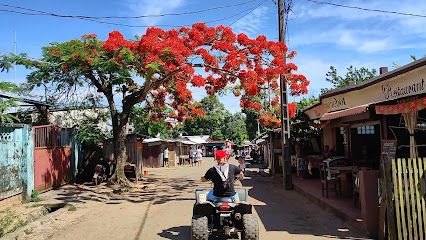
Place de la Colonne
Discover the tranquil beauty of Place de la Colonne, a serene garden in Ampasimazava, perfect for relaxation and cultural immersion.

Agence Consulaire de France à TAMATAVE
Discover the essence of French diplomacy in Madagascar at the Agence Consulaire de France in Toamasina, a blend of history and vibrant local culture.
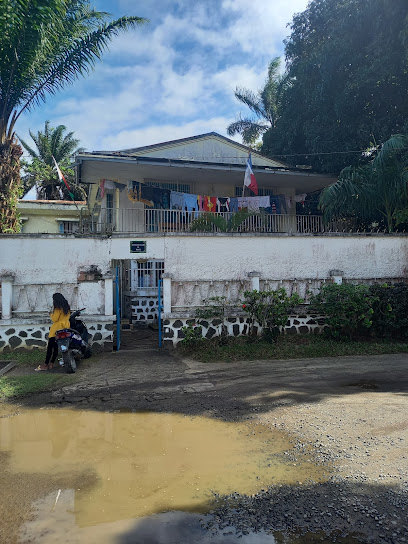
Chrismiatours Madagascar
Discover the beauty of Madagascar with Chrismiatours - Your gateway to unforgettable adventures and unique cultural experiences.

Soul Of Madagascar Tours
Explore Madagascar's breathtaking landscapes and unique wildlife with tailored tours from Soul Of Madagascar Tours, your gateway to unforgettable adventures.

Ma'skar Travel
Explore the enchanting landscapes of Madagascar with Ma'skar Travel, your trusted travel agency in Toamasina.

TOAMASINA
Experience Toamasina: Madagascar's lively port city with stunning beaches, rich culture, and vibrant local markets perfect for every traveler.

FANILO TOUR MADAGASCAR
Discover Madagascar's unique beauty and rich culture with Fanilo Tours, your expert tour operator in Toamasina for unforgettable adventures.

HAODYGASIKARA
Discover Madagascar's hidden gems with HAODYGASIKARA, your expert travel agency for personalized itineraries and unforgettable adventures.

Unmissable attractions to see
Parc Ivoloina
Explore Parc Ivoloina, Madagascar's enchanting zoo and wildlife sanctuary, where adventure meets conservation in a breathtaking natural setting.

Vavatiana Giant Strangler Figs
Explore the breathtaking Vavatiana Giant Strangler Figs park in Toamasina, Madagascar, home to majestic trees and serene natural beauty.

Esplanade de la mairie
Discover the tranquil beauty of Esplanade de la Mairie in Toamasina, a lush garden retreat perfect for relaxation and reflection.
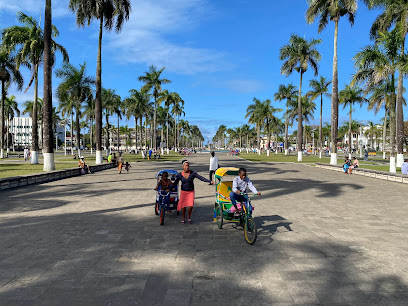
Mi.A.Mi (Miray hina Ary Mifankatia) by Aurel'studio
Explore the artistic heart of Toamasina at Mi.A.Mi, a vibrant studio showcasing local creativity and cultural expressions in Madagascar.

Kaps Garden
Discover the enchanting beauty of Kaps Garden in Toamasina, Madagascar - a serene park filled with lush greenery and vibrant flowers.

Front de Mer
Explore the pristine beaches and vibrant culture of Front de Mer, a tranquil coastal paradise in Toamasina, Madagascar.

Pichori Garden
Discover the beauty of Madagascar at Pichori Garden, a tranquil oasis in Toamasina, perfect for nature lovers and those seeking peace.

Carrière Dimby
Discover the stunning hiking trails of Carrière Dimby in Toamasina, Madagascar, where adventure meets breathtaking natural beauty in every step.
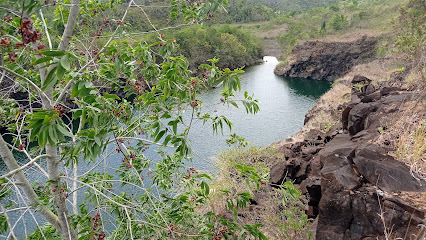
Cocoss beach
Discover the tranquil beauty of Cocoss Beach in Toamasina, Madagascar, where golden sands meet azure waters for an unforgettable getaway.

Place de la Republique
Experience the vibrant culture of Toamasina at Place de la Republique, where local life and history come alive in the heart of Madagascar.

Toamasina Beach
Experience the stunning beauty of Toamasina Beach, where pristine sands meet vibrant local culture and exhilarating hiking adventures.
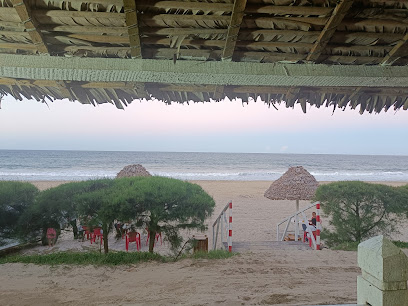
Diahnay Tours
Experience the beauty and culture of Madagascar with personalized tours at Diahnay Tours in Toamasina.

filazana
Discover the natural beauty and tranquility of Filazana Park in Toamasina, Madagascar, a perfect retreat for nature lovers and explorers.

ᱛᱟᱢᱟᱥᱤᱱᱟ
Discover the tranquil beauty of Mangarivotra Garden in Toamasina, a vibrant oasis of flora and culture in Madagascar's coastal city.

ISSEDD Mangrove Team
Explore the tranquil beauty and biodiversity of ISSEDD Mangrove Team, a nature preserve in Toamasina, Madagascar, dedicated to conservation and education.

Essential places to dine
La Terrasse
Experience the vibrant flavors and lively atmosphere at La Terrasse in Toamasina - where every meal becomes a celebration.

Darafify
Experience authentic Malagasy cuisine at Darafify in Toamasina - where every meal is a celebration of flavor.

La braise Coté cour
Experience authentic Malagasy cuisine at La Braise Coté Cour in Toamasina - a culinary treasure blending tradition with flavor.
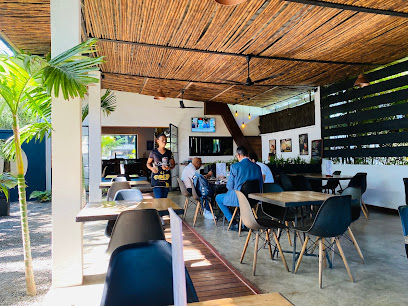
L'affiche
Experience the essence of Malagasy cuisine at L'affiche in Toamasina – where every dish tells a story.

Restaurant La Paillote
Discover authentic Malagasy cuisine at Restaurant La Paillote in Toamasina – where every dish tells a story.

Namaste 501
Experience the vibrant flavors of Asia at Namaste 501 in Toamasina – where culinary tradition meets modern dining.

Restaurant Fortuna
Discover authentic Malagasy cuisine at Restaurant Fortuna in Toamasina – where every meal is a celebration of flavor and culture.

Hotel Restaurant La Veranda
Discover authentic Madagascar flavors at Hotel Restaurant La Veranda in Toamasina - where culinary excellence meets comfortable lodging.

Restaurant Longo
Savor authentic Chinese flavors at Restaurant Longo in Toamasina - a culinary gem offering delightful dishes in an inviting atmosphere.

Restaurant L7
Experience the flavors of Madagascar at Restaurant L7 - where local ingredients meet culinary creativity in a warm setting.

SARKY'S
Experience the vibrant culinary scene at Sarky's in Toamasina—where delicious local dishes meet refreshing drinks in a lively atmosphere.

Hotel Restaurant Longo
Experience the rich flavors of Madagascar at Hotel Restaurant Longo in Toamasina - where local ingredients meet exceptional dining.

Verre à Soi
Experience authentic Malagasy cuisine at Verre à Soi, Toamasina's culinary jewel offering delightful dishes and warm hospitality.

Via mare (hôtel neptune & la braise)
Experience Madagascar's culinary treasures at Via Mare in Toamasina – where fresh flavors meet stunning coastal views.

CHEZ OLI
Experience authentic Malagasy cuisine at Chez Oli in Toamasina – where fresh flavors meet local hospitality.
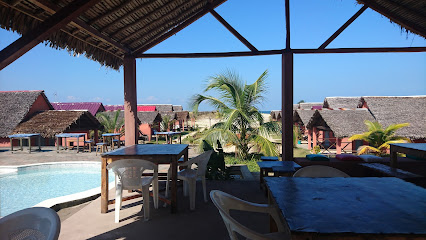
Markets, malls and hidden boutiques
La Braise
Discover La Braise, Toamasina's beloved ice cream shop, offering delightful flavors and a welcoming ambiance for every visitor.

Bazary Be
Explore the vibrant Bazary Be shopping mall in Toamasina, where local culture meets modern retail in a lively and welcoming atmosphere.

SCORE Bazarikely
Explore the vibrant SCORE Bazarikely supermarket in Toamasina for an authentic shopping experience filled with local and international products.

SOPHYTECH
Discover a tech paradise at SOPHYTECH in Toamasina, offering everything from computers to video games—your one-stop shop for all things tech.

Patisserie Wong
Discover the delightful world of Madagascar’s flavors at Patisserie Wong, Toamasina's premier bakery for fresh pastries and local treats.

Boutique Vania Annexe
Explore Boutique Vania Annexe in Toamasina for an eclectic mix of local and contemporary fashion that embodies the spirit of Madagascar.

TENDENCIA
Discover unique women's fashion at TENDENCIA in Toamasina, blending local craftsmanship with contemporary style in a vibrant shopping experience.

FANDRESENA Technologie
Discover cutting-edge technology and gadgets at FANDRESENA Technologie, Toamasina's premier electronics store, perfect for tourists and tech enthusiasts alike.

Renault Toamasina Madagascar
Discover Renault Toamasina in Madagascar: A premier destination for automotive enthusiasts and tourists alike, showcasing a wide array of Renault vehicles.

MAGASIN MANORO
Discover the heart of Toamasina's electronics scene at MAGASIN MANORO, where cutting-edge technology meets local charm.

Ex Orange
Explore Ex Orange in Toamasina for a vibrant shopping experience blending local culture with modern retail and delicious dining options.
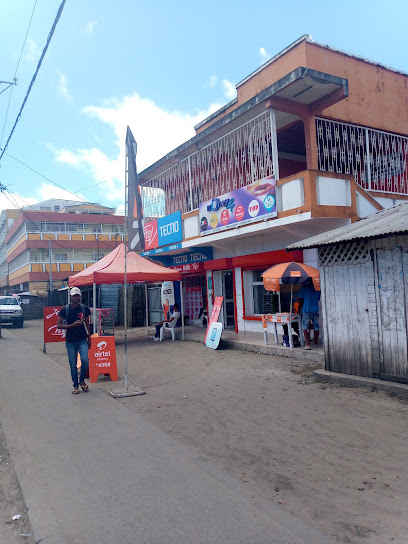
Lot 03 parcelle 11/43 careau n3 Andranomadio
Explore unique home goods and crafts in Toamasina, showcasing Madagascar's rich culture and artistry.
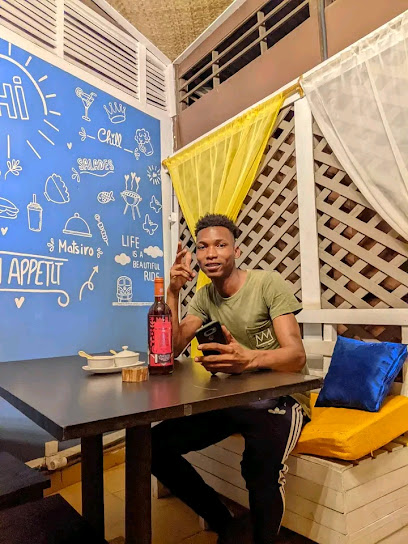
COSMOS Tamatave
Discover a vibrant shopping experience at COSMOS Tamatave, where local culture meets modern retail in the heart of Toamasina, Madagascar.

NITIC Shop Bazar Kely
Explore cutting-edge electronics and local tech culture at NITIC Shop Bazar Kely in Toamasina, Madagascar.
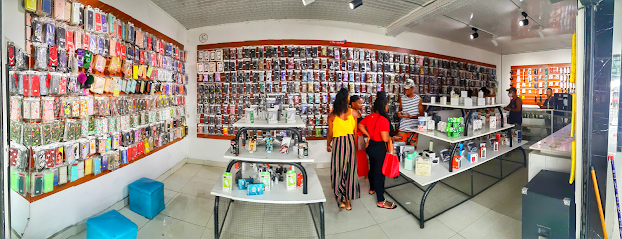
Chez Béa
Explore the vibrant local culture and flavors at Chez Béa, a delightful grocery store in Tanamakoa, Toamasina, offering fresh produce and unique Malagasy goods.

Essential bars & hidden hideouts
The New York Bar
Experience the vibrant nightlife of Madagascar at The New York Bar in Toamasina, where local flavors and friendly faces await you.

Bar meet karaoké
Experience the vibrant nightlife of Toamasina at Bar Meet Karaoké, where music and laughter create unforgettable memories.

Le feeling bar karaoké à côte de soavita
Experience the vibrant nightlife of Toamasina at Le Feeling Bar Karaoké, where every night is a celebration of music and fun.

Bar MANANARA
Experience the vibrant culture of Toamasina at Bar MANANARA, where local flavors and lively atmosphere meet for an unforgettable night.

Bar Shisha
Experience the vibrant culture of Toamasina at Bar Shisha, where flavorful shisha and local camaraderie create unforgettable moments.

Tanamax BAR
Discover the lively atmosphere and local flavors at Tanamax BAR in Toamasina, where relaxation meets vibrant nightlife.

Belle AIRE
Experience the vibrant nightlife of Toamasina at Belle AIRE, a top bar for cocktails, local brews, and live entertainment in a cozy setting.
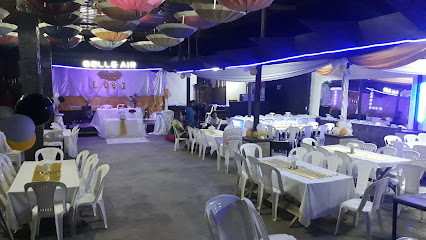
Bar SAOLY
Experience the lively nightlife of Toamasina at Bar SAOLY, where refreshing drinks and a warm atmosphere await every visitor.
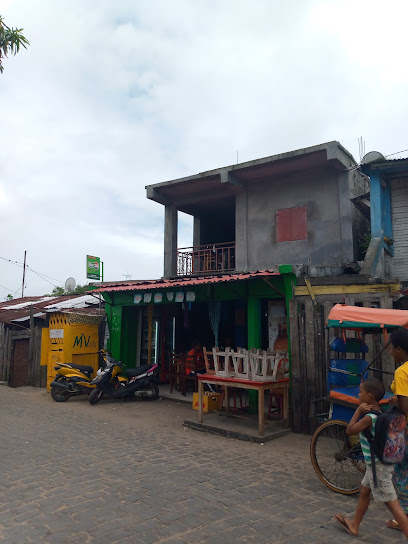
Chez moi
Discover the vibrant nightlife at Chez Moi, Toamasina's favorite bar, where local flavors meet lively entertainment in a welcoming atmosphere.

Bar MAX
Experience the rich local culture and vibrant atmosphere at Bar MAX, the must-visit bar in Toamasina, Madagascar.

Texas Bar
Experience the lively ambiance and local flavors at Texas Bar, a must-visit destination in Toamasina, Madagascar.

Bar Jamaïca
Discover the lively spirit of Toamasina at Bar Jamaïca, where local flavors and vibrant nightlife come together for an unforgettable experience.

Colombian bar
Discover the vibrant Colombian Bar in Toamasina, a lively spot for drinks, music, and unforgettable nights in Madagascar.

WAGON BAR LOUNGE
Experience the lively atmosphere of Wagon Bar Lounge in Toamasina, where local culture meets refreshing cocktails and vibrant entertainment.

Bar Zazakely
Experience the lively nightlife at Bar Zazakely in Toamasina, Madagascar, where local flavors and vibrant energy come together.

Local Phrases
-
- HelloSalama
[sa-la-ma] - GoodbyeVeloma
[ve-lo-ma] - YesEny
[e-ny] - NoTsia
[tsi-a] - Please/You're welcomeAzafady
[a-za-fa-dy] - Thank youMisaotra
[mi-sa-o-tra] - Excuse me/SorryAzafady
[a-za-fa-dy] - How are you?Manao ahoana ianao?
[ma-nao a-wa-na ya-nao] - Fine. And you?Tsara. Ary ianao?
[tsa-ra. a-ry ya-nao] - Do you speak English?Miteny teny Anglisy ianao?
[mi-te-ny te-ny a-ngli-sy ya-nao] - I don't understandTsy nanao izy aho
[tsi na-nao i-zy a-ho]
- HelloSalama
-
- I'd like to see the menu, pleaseTe hividy ny laharana, azafady
[te hi-vi-dy ny la-ha-ra-na, a-za-fa-dy] - I don't eat meatTsy misy mihinam-bary aho
[tsi mi-sy mi-hi-na-mba-ry a-ho] - Cheers!Mazotoa!
[ma-zo-to-a] - I would like to pay, pleaseTe hampiditra vola, azafady
[te ham-pi-di-tra vo-la, a-za-fa-dy]
- I'd like to see the menu, pleaseTe hividy ny laharana, azafady
-
- Help!Fandresena!
[fan-dre-se-na] - Go away!Miverina!
[mi-ve-ri-na] - Call the Police!Mangataka ny polisy!
[ma-nga-ta-ka ny po-li-sy] - Call a doctor!Mangataka dokotera!
[ma-nga-ta-ka do-ko-te-ra] - I'm lostMandeha tsy fantatra aho
[man-de-ha tsi fan-ta-tra a-ho] - I'm illMikorontana aho
[mi-ko-ron-ta-na a-ho]
- Help!Fandresena!
-
- I'd like to buy...Te hividy...
[te hi-vi-dy] - I'm just lookingMitady fotsy aho
[mi-ta-dy fo-tsy a-ho] - How much is it?Ohatra ny fampiasana azy?
[o-ha-tra ny fam-pia-sa-na a-zy] - That's too expensiveMahery ny vidiny
[ma-he-ry ny vi-di-ny] - Can you lower the price?Azafady, afaka manadio ny vidiny ve ianao?
[a-za-fa-dy, a-fa-ka ma-na-dyo ny vi-di-ny ve ya-nao]
- I'd like to buy...Te hividy...
-
- What time is it?Inona no ora?
[i-no-na no o-ra] - It's one o'clockRaha nosamborina
[ra-ha no-sam-bo-ri-na] - Half past (10)Sasany sy folo
[sa-sa-ny sy fo-lo] - MorningMaraina
[ma-ra-i-na] - AfternoonHariva
[ha-ri-va] - EveningAlina
[a-li-na] - YesterdayOmaly
[o-ma-ly] - TodayAnio
[a-ni-o] - TomorrowRahalahy
[ra-ha-la-hy] - 1Iray
[i-ray] - 2Roa
[ro-a] - 3Telo
[te-lo] - 4Efatra
[e-fa-tra] - 5Dimy
[di-my] - 6Enina
[e-ni-na] - 7Fitohy
[fi-to-hy] - 8Valo
[va-lo] - 9Sivy
[si-vy] - 10Folo
[fo-lo]
- What time is it?Inona no ora?
-
- Where's a/the...?Aiza ny...
[ai-za ny] - What's the address?Inona ny adiresy?
[i-no-na ny a-di-re-sy] - Can you show me (on the map)?Azafady, afaka manampy ahy (amin'ny saritany)?
[a-za-fa-dy, a-fa-ka ma-nam-py a-hy (a-mi-n'ny sa-ri-ta-ny)] - When's the next (bus)?Aiza no ho avy indray (biraom-pianakaviana)?
[ai-za no ho a-vy in-dray (bi-ra-om-pya-na-ka-vya-na)] - A ticket (to ....)Fandikan-teny (hatrany ...)
[fan-di-kan-te-ny (hat-ra-ny)]
- Where's a/the...?Aiza ny...
History of Toamasina
-
Toamasina, also known as Tamatave, was founded in the early 18th century by the Betsimisaraka people. Its strategic location on the east coast of Madagascar made it a natural harbor and a significant trading post for the local communities and foreign traders.
-
During the late 17th and early 18th centuries, the waters around Toamasina were frequented by pirates, including the infamous pirate Captain Kidd. The town became a haven for these seafaring outlaws who sought refuge and traded their plunder in the local markets.
-
In 1895, Toamasina fell under French colonial rule as part of their conquest of Madagascar. The French established it as a major port city, and significant infrastructure development took place, including the construction of roads, railways, and port facilities. This period marked the beginning of Toamasina's transformation into a bustling urban center.
-
During World War II, Toamasina played a crucial role as a strategic port for the Allies. The port was used to supply Allied forces in the region and to launch operations against Axis powers. The presence of Allied troops brought significant economic activity to the city.
-
After Madagascar gained independence from France in 1960, Toamasina continued to grow as an economic hub. The city became the main gateway for imports and exports, with its port handling a significant portion of the country's maritime trade. The economic prosperity led to urban development and population growth.
-
Toamasina is known for its diverse cultural heritage, influenced by the various ethnic groups that have settled in the city over the centuries. The blend of Malagasy, French, Indian, Chinese, and Arab cultures is evident in the city's architecture, cuisine, and festivals. The annual 'Fisemana' festival, celebrated by the Betsimisaraka people, is a vibrant display of local traditions and customs.
-
Today, Toamasina is a thriving city with a population of over 300,000 residents. It remains Madagascar's primary port and a key economic center. The city's infrastructure continues to develop, with improvements in transportation, education, and healthcare. Toamasina's rich history and cultural diversity make it a fascinating destination for travelers seeking to explore the unique heritage of Madagascar.
Toamasina Essentials
-
Toamasina, also known as Tamatave, is accessible via Toamasina Airport (TMM). The airport offers domestic flights primarily from Antananarivo, the capital of Madagascar. International travelers usually fly into Antananarivo's Ivato International Airport (TNR) and then take a connecting flight or travel by road to Toamasina. The journey by road takes approximately 7-9 hours through the scenic RN2 highway. Public buses and private taxi-brousses (shared taxis) are available for budget travelers.
-
In Toamasina, transportation options include taxis, tuk-tuks (known locally as 'Bajaj'), and buses. Taxis are relatively inexpensive and can be hailed from the street or arranged via your hotel. Tuk-tuks are a popular and cost-effective way to get around the city. For those looking to explore surrounding areas, rental cars are available, though driving can be challenging due to road conditions and local driving habits.
-
The official currency in Madagascar is the Malagasy Ariary (MGA). Credit cards are accepted in some hotels, restaurants, and larger stores in Toamasina, but it's advisable to carry cash for smaller establishments and markets. ATMs are available in the city, but it's a good idea to have sufficient cash on hand, particularly if you plan to travel to more remote areas.
-
Toamasina is generally safe, but like any major city, it has areas with higher crime rates. It is recommended to avoid isolated areas, especially at night. Neighborhoods like Bazary Be and the Port area can be risky after dark. Petty crimes such as pickpocketing and bag snatching can occur, so stay vigilant and secure your belongings. Always use registered taxis, and avoid walking alone late at night.
-
In case of emergency, dial 117 for police assistance and 124 for medical emergencies. The main hospital in Toamasina is Toamasina Regional Hospital, which provides emergency medical services. Pharmacies are available throughout the city for minor health issues. It is highly recommended to have travel insurance that covers medical emergencies and evacuation.
-
Fashion: Do dress modestly. Light, breathable fabrics are ideal due to the tropical climate. Avoid wearing revealing clothing in public places. Religion: Do respect local customs and traditions. When visiting religious sites, cover your shoulders and knees. Public Transport: Do be mindful of your belongings. Don’t hesitate to ask locals for help if needed. Greetings: Do greet people with a handshake and a warm smile. A slight nod of the head is a sign of respect. Eating & Drinking: Do try local dishes like 'Ravitoto' and 'Romazava'. Don’t refuse food offered by locals; it is a sign of hospitality.
-
To experience Toamasina like a local, visit the Bazary Be market early in the morning to see a bustling display of local produce and seafood. Engage with the vendors; many are friendly and willing to share stories about their goods and the city. Take a stroll along the Boulevard Joffre, where you can enjoy the colonial architecture and vibrant street life. Don’t miss the opportunity to try fresh lychees if you visit during the harvest season (November to January).
Trending Landmark in Toamasina
Nearby Cities to Toamasina
-
Things To Do in Andasibe
-
Things To Do in Antananarivo
-
Things To Do in Antsirabe
-
Things To Do in Mahajanga
-
Things To Do in Majunga
-
Things To Do in Fianarantsoa
-
Things To Do in Manakara
-
Things To Do in Nosy Be
-
Things To Do in Antsiranana
-
Things To Do in Diego Suarez
-
Things To Do in Bandrele
-
Things To Do in Chirongui
-
Things To Do in Dembeni
-
Things To Do in Mamoudzou
-
Things To Do in Sada









